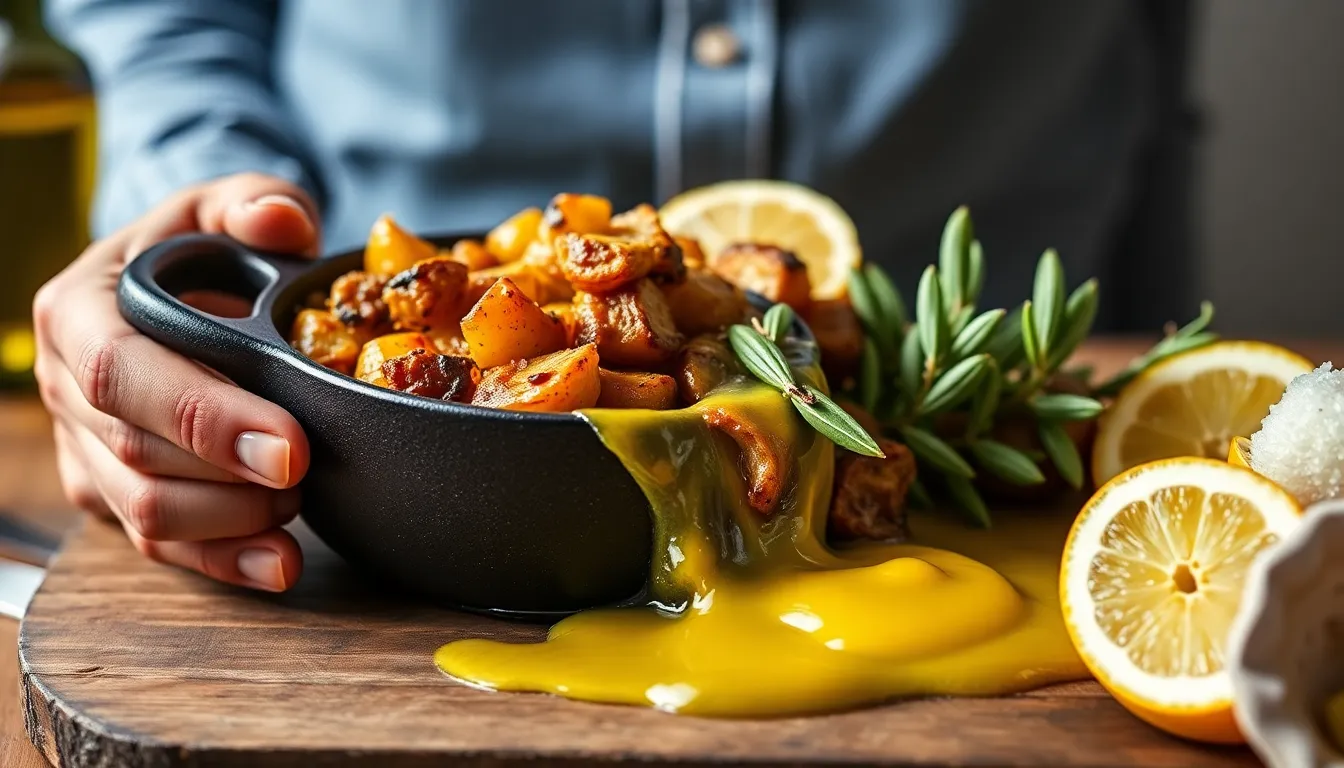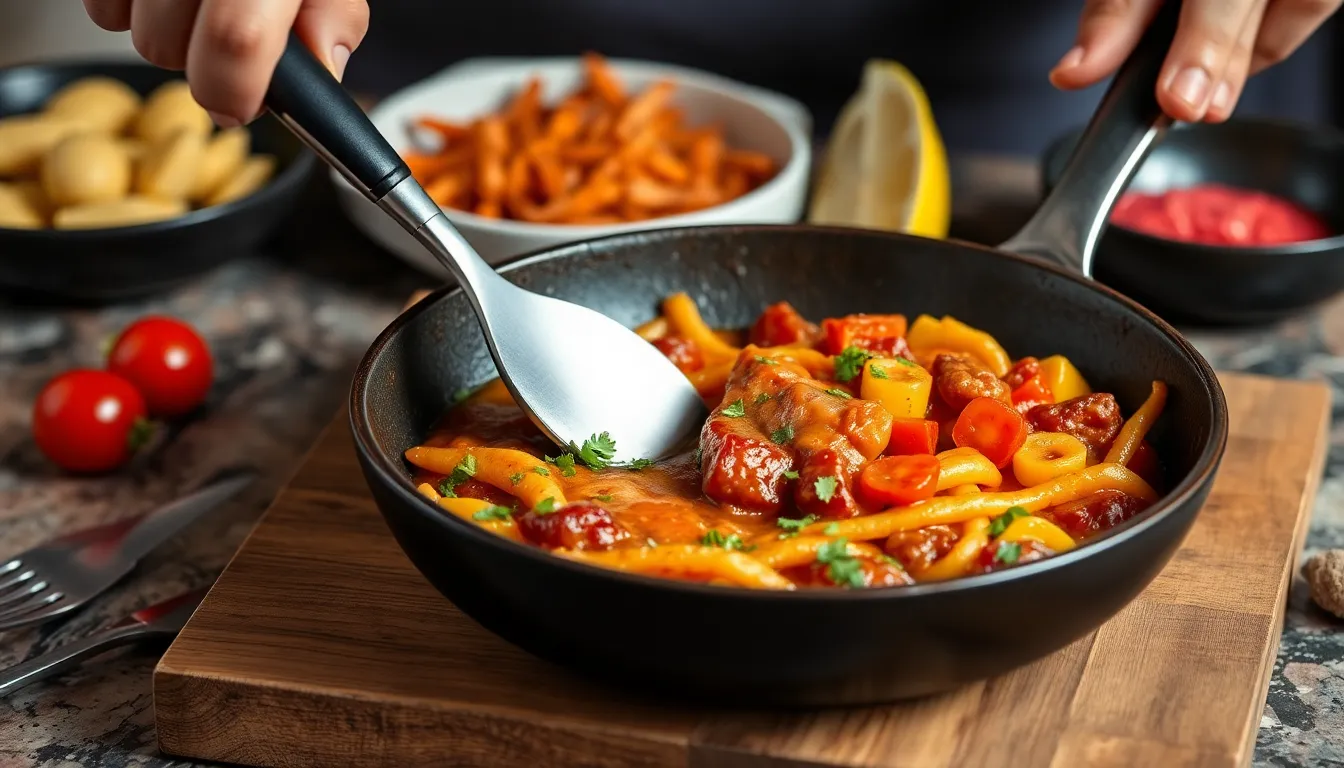Cooking with Olive Oil: The Heart of Spanish Cuisine and 5 Recipes to Enjoy
I. Introduction: The Essence of Olive Oil in Spanish Cooking
Olive oil is no mere ingredient in Mediterranean diets; it’s a cornerstone of culinary tradition, particularly in Spain. This golden liquid, extracted from the fruit of the olive tree, has been revered for centuries, not just for its taste, but for its health benefits and cultural significance. Spanish cuisine, rich in flavors and colors, finds its soul in the heart of olive oil, infusing dishes with depth and character.
This article will delve into the numerous ways olive oil enriches Spanish culinary traditions. We will explore its importance, the benefits it brings to our health and cooking, and share five delightful recipes that celebrate this iconic ingredient. Prepare to embark on a flavorful journey through the sun-drenched landscapes of Spain!
II. The Golden Elixir: Understanding Olive Oil
Understanding olive oil is akin to understanding a nation’s soul. Different types and qualities can affect the flavor profile of your dishes significantly. Let’s take a closer look at the types of olive oil available and the health benefits they offer.
A. Types of Olive Oil: A Flavorful Journey
1. Extra Virgin Olive Oil: The Gold Standard
Extra virgin olive oil (EVOO) is the highest quality olive oil available, extracted from the first cold pressing of olives. It has a robust flavor and retains natural antioxidants and nutrients, making it ideal for dressing salads, drizzling over dishes, or enjoying with bread.
2. Virgin Olive Oil: A Step Down, but Not Lacking
Virgin olive oil is also made from the first pressing of olives but has a higher acidity level than EVOO. It offers a slightly milder flavor and can be used in cooking and for dressings, though it won’t provide the same depth of flavor as its extra virgin counterpart.
3. Refined Olive Oil: The Mild Alternative
Refined olive oil undergoes processing to neutralize its strong flavor and acidity. It has a lighter taste and is suitable for high-heat cooking methods, making it a versatile choice for frying and sautéing.
B. Health Benefits: Why You Should Embrace Olive Oil
1. Heart Health: The Monounsaturated Miracle
Olive oil is rich in monounsaturated fats, which have been linked to a reduced risk of heart disease. Regular consumption can lower LDL cholesterol levels while raising HDL cholesterol, promoting overall heart health.
2. Antioxidants: Nature’s Defense System
High in antioxidants such as vitamin E and polyphenols, olive oil helps combat oxidative stress in the body, potentially reducing the risk of chronic diseases.
3. Culinary Versatility: More than Just Dressing
Beyond salads and dipping, olive oil can be used in a variety of cooking applications, from frying to roasting, imparting unique flavors that can elevate any dish.
HTML Table: Types of Olive Oil
| Type of Olive Oil | Flavor Profile | Best Uses |
|---|---|---|
| Extra Virgin Olive Oil | Robust, fruity, and aromatic | Dressings, dips, drizzling |
| Virgin Olive Oil | Mild with a hint of flavor | Cooking, dressings |
| Refined Olive Oil | Neutral and light | High-heat cooking, frying |
III. Cooking Techniques: Making the Most of Olive Oil
Mastering the use of olive oil in your kitchen can transform your cooking. Here are some techniques to help you make the most of this golden elixir.
A. Drizzling vs. Drenching: When Less is More
Understanding when to drizzle or drench olive oil can enhance the flavor without overpowering your dishes. A delicate drizzle of EVOO over a salad can uplift the freshness, while drenching can lend moisture and richness to roasted vegetables.
B. Sautéing and Frying: Achieving Perfect Flavors
Olive oil is an excellent choice for sautéing and frying thanks to its ability to withstand moderate heat while imparting a rich, flavorful base to your dishes. It’s perfect for vegetables, seafood, and meats alike.
C. Baking with Olive Oil: A New Twist on Tradition
Baking with olive oil can add a unique depth to your baked goods. Substitute butter with olive oil in cakes and breads for a moist, flavorful result that offers health benefits.
D. Dressing and Marinades: Elevating Fresh Ingredients
Creating dressings and marinades with olive oil can elevate the simplest of ingredients. Pair it with vinegar, citrus, or herbs for a homemade dressing that dances on your palate.
IV. Five Must-Try Spanish Recipes Featuring Olive Oil
Now that we understand the importance of olive oil, it’s time to dive into some delectable Spanish recipes that showcase its versatility. Each recipe highlights the unique qualities of olive oil, making your culinary experience both delightful and healthy.
A. Classic Gazpacho: A Refreshing Summer Staple
1. Ingredients listing
- 4 large ripe tomatoes
- 1 cucumber, peeled and chopped
- 1 bell pepper, chopped
- 1 small red onion, chopped
- 2 cloves garlic, minced
- 1/4 cup red wine vinegar
- 1/2 cup extra virgin olive oil
- Salt and pepper to taste
2. Step-by-step preparation
- In a blender, combine the tomatoes, cucumber, bell pepper, onion, and garlic.
- Blend until smooth, then add vinegar and olive oil, and blend again.
- Season with salt and pepper to taste.
- Chill in the refrigerator for at least 2 hours before serving.
B. Patatas Bravas: Crispy Potatoes with a Kick
1. Ingredients listing
- 4 large potatoes, peeled and cut into cubes
- 1/2 cup extra virgin olive oil
- 1 tsp smoked paprika
- Salt to taste
- For the sauce:
- 1/2 cup mayonnaise
- 2 tbsp ketchup
- 1 tsp hot sauce
2. Step-by-step preparation
- Preheat the oven to 425°F (220°C).
- Toss potato cubes in a bowl with olive oil, paprika, and salt.
- Spread on a baking sheet and roast for 30-35 minutes until crispy.
- Meanwhile, mix mayonnaise, ketchup, and hot sauce in a small bowl for the dipping sauce.
- Serve hot with the sauce on the side.
C. Spanish Tortilla: The Ultimate Comfort Food
1. Ingredients listing
- 4 large eggs
- 2 large potatoes, peeled and thinly sliced
- 1 small onion, chopped
- 1/4 cup extra virgin olive oil
- Salt to taste
2. Step-by-step preparation
- Heat olive oil in a non-stick skillet over medium heat.
- Add potatoes and onion, cooking until softened, about 10-12 minutes.
- In a bowl, whisk the eggs with salt. Add the potato mixture and stir gently.
- Pour the mixture back into the skillet and cook for 5-7 minutes until set on the bottom.
- Flip and cook the other side until golden brown.
- Let cool slightly before slicing and serving.
D. Pisto: The Spanish Ratatouille
1. Ingredients listing
- 1 zucchini, diced
- 1 eggplant, diced
- 1 bell pepper, diced
- 1 onion, chopped
- 2 tomatoes, chopped
- 1/4 cup extra virgin olive oil
- Salt and pepper to taste
2. Step-by-step preparation
- Heat olive oil in a large skillet over medium heat.
- Add onion and bell pepper, cooking until softened.
- Add eggplant and zucchini, sautéing until tender.
- Stir in tomatoes, salt, and pepper. Cook until the mixture thickens, about 15 minutes.
- Serve warm, with a drizzle of olive oil on top.
E. Churros with Chocolate: A Sweet Finish
1. Ingredients listing
- 1 cup water
- 1/2 cup butter
- 1 cup flour
- 1/4 cup sugar
- 1/2 tsp salt
- 1 tsp baking powder
- 1/4 cup extra virgin olive oil (for frying)
- For the chocolate sauce:
- 1 cup dark chocolate chips
- 1 cup heavy cream
2. Step-by-step preparation
- In a saucepan, bring water and butter to a boil.
- Add flour, sugar, salt, and baking powder, stirring until a dough forms.
- Heat olive oil in a deep pan for frying.
- Pipe the dough into the hot oil, frying until golden brown. Remove and drain on paper towels.
- For the sauce, heat cream until simmering, then pour over chocolate chips. Stir until melted.
- Serve churros warm, dunked in chocolate sauce.
V. Pairing Perfection: Complementing Olive Oil Dishes
Pairing your olive oil-infused dishes with the right accompaniments can elevate your culinary experience. Here are some tips on pairing perfection.
A. Wine Pairings: Elevating Your Meal Experience
Wine can beautifully complement olive oil dishes. Here are some suggested pairings:
- Gazpacho: A crisp white wine like Albariño.
- Patatas Bravas: A fruity red like Tempranillo.
- Spanish Tortilla: A dry rosé for a refreshing contrast.
- Pisto: A medium-bodied red like Garnacha.
- Churros: A sweet dessert wine like Pedro Ximénez.
B. Side Dishes: What Goes Well with Olive Oil-Based Recipes
Consider these side dishes to complement your main courses:
- Crusty bread drizzled with olive oil and herbs.
- Fresh arugula salad with lemon dressing.
- Roasted seasonal vegetables with balsamic reduction.
- Cheese platter featuring Spanish cheeses like Manchego and Iberico.
C. Seasonal Ingredients: Making the Most of Local Flavors
Using seasonal ingredients can enhance your dishes significantly. Here are some suggestions:
- Spring: Asparagus, peas, and radishes pair beautifully with olive oil.
- Summer: Tomatoes, zucchini, and eggplant thrive in olive oil dishes.
- Fall: Pumpkins, squash, and root vegetables shine with a drizzle of olive oil.
- Winter: Leafy greens, citrus fruits, and hearty grains continue to elevate your meals.
VI. Conclusion: Embrace the Heart of Spanish Cuisine
In summary, olive oil is integral to Spanish cuisine, bringing flavor, health benefits, and a cultural connection that transcends generations. As you explore the recipes shared in this article, let olive oil guide your creativity in the kitchen, encouraging you to experiment and enjoy the richness of Mediterranean flavors.
So, whether you’re drizzling, sautéing, or baking, embrace the heart of Spanish cuisine. Dive into the world of olive oil and watch as it transforms your dishes and nourishes your body. Happy cooking!




